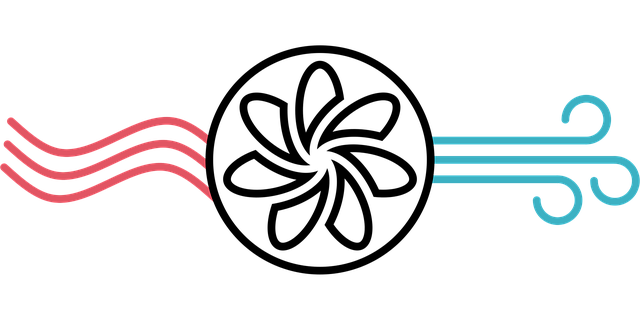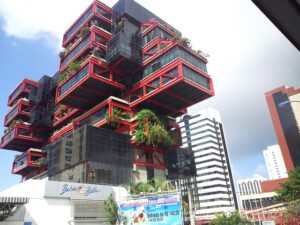Troubleshooting 50 kW Combi Boilers: A Semantic Cluster Approach
Understanding and addressing common issues with 50 kW combi boilers is crucial for optimal performan…….

Understanding and addressing common issues with 50 kW combi boilers is crucial for optimal performance and energy efficiency. Regular maintenance, structured problem diagnosis, and data-driven approaches based on service records and forums are key. By identifying recurring themes in narratives, targeted strategies emerge, enhancing heating systems' lifespan and energy savings.
In the realm of maintenance for 50 kW combi boilers, understanding the diverse troubleshooting narratives is key. This article delves into the systematic organization of these narratives through semantic clustering, revealing common issues and efficient fixing techniques. By identifying recurring themes, we offer a structured approach to maintenance, enhancing the diagnostic process and optimizing performance. Specifically, we explore how this method groups narratives, providing insights into the most prevalent challenges faced by professionals in the field.
- Identifying Common Issues in 50 kW Combi Boilers
- Troubleshooting Techniques for Efficient Fixing
- Grouping Narratives: A Systematic Approach to Maintenance
Identifying Common Issues in 50 kW Combi Boilers

In the realm of 50 kW combi boilers, identifying common issues is akin to navigating a complex tapestry. These high output boilers, designed for large property heating with multiple bathrooms, often face challenges related to performance and efficiency. Whether it’s an inconsistent hot water flow rate or a reduced central heating capacity, these problems can stem from various factors. For instance, natural gas fired combis might struggle due to fluctuations in gas supply, while LPG compatibility issues can arise, requiring careful adjustment of settings.
Moreover, the absence of condensing technology in some models can impact energy efficiency, leading to higher running costs. As users seek more energy-efficient solutions, understanding these narrative clusters is crucial. With ErP A rated boilers becoming the standard, troubleshooting common problems becomes a vital step towards ensuring optimal performance and preserving the longevity of these essential heating systems.
Troubleshooting Techniques for Efficient Fixing

When troubleshooting a 50 kW combi boiler, a systematic approach is key to efficient fixing. Start by identifying the issue—is it related to hot water flow rate, central heating capacity, or a malfunction in the condensing technology? Each symptom may require specific techniques. For instance, if the boiler is not producing sufficient hot water for multiple bathrooms in a large property heating system, check the thermostat settings and ensure the natural gas fired or LPG compatible boiler is functioning optimally. Regular maintenance checks can prevent issues like these.
Additionally, consider the energy efficiency of the 50 kW combi boiler, especially if it’s an ErP A-rated model known for its high output. Troubleshooting should involve assessing factors that impact performance, such as the quality and pressure of the input fuel (natural gas or LPG), and verifying proper drainage to prevent moisture buildup. The use of condensing technology in these boilers is a game-changer, offering enhanced energy efficiency—a key aspect when it comes to troubleshooting and maintaining these high output boilers.
Grouping Narratives: A Systematic Approach to Maintenance

Grouping narratives about 50 kW combi boilers into distinct clusters offers a systematic approach to maintenance and troubleshooting. By analyzing large volumes of data from various sources—including service records, online forums, and manufacturer guidelines—it becomes possible to identify recurring themes and common issues specific to these high-output boilers. This method allows for the categorization of narratives based on problem types, failure modes, and relevant contextual factors such as installation settings and fuel type (natural gas fired or LPG compatible).
For instance, clusters might emerge centered around “hot water flow rate” issues in large properties with multiple bathrooms, or “central heating capacity” problems related to condensing technology. Such groupings facilitate targeted maintenance strategies. For the former, regular flushing and system optimization techniques could be recommended; for the latter, ensuring proper installation and efficient use of ErP A-rated boilers might be emphasized. This systematic approach leverages the collective knowledge captured in troubleshooting narratives to enhance energy efficiency and ensure optimal performance of 50 kW combi boilers.
Semantic clustering has proven to be a powerful tool for organizing and understanding troubleshooting narratives of 50 kW combi boilers. By grouping similar issues and solutions, this method enhances efficient maintenance practices. This systematic approach not only saves time but also ensures that common problems are addressed effectively, ultimately leading to improved boiler performance and longevity. In the context of 50 kW combi boilers, this clustering technique offers a structured path for troubleshooting, making it an invaluable asset for technicians and facility managers alike.







